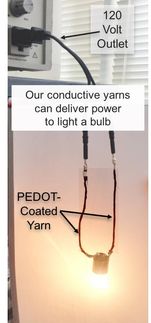Silkworms spin colored silks while on a ‘green’ dyed-leaf diet
A new, “greener” dyeing method coaxes already-colored fibers from silkworms fed leaves that are dipped or sprayed with dye
For some 5,000 years, cultivated silkworms have been spinning luxurious white silk fibers destined for use in the finest clothing. But current dyeing practices produce wastewater that contains potentially harmful toxins, so scientists are turning to a new, “greener” dyeing method in which they coax already-colored fibers from the caterpillars by feeding them dyed leaves. Their findings are published in the journal ACS Sustainable Chemistry & Engineering.
Anuya Nisal, Kanika Trivedy and colleagues point out that dyeing textile fabrics is one of today’s most polluting industries. The process requires huge quantities of water for bleaching, washing and rinsing, and it results in a stream of harmful wastewater that needs to be treated effectively before release into the environment. To make the industry greener and more environmentally friendly, researchers have been developing less toxic methods, including feeding dyed leaves to silkworms so they spin colored — rather than white — cocoons. But so far, this technique has only been tested with one type of dye, which is too pricey for large-scale production. Thus, the team turned to azo dyes, which are inexpensive and account for more than half of the textile dyes used today.
They dipped or sprayed mulberry leaves, the silkworm’s food of choice, with azo dyes to see which ones, when consumed, would transfer to the silk. Of the seven dyes they tested, three were incorporated into the caterpillars’ silk, and none seemed to affect the worms’ growth. The scientists noticed that certain dye traits, such as the ability to dissolve in water, affected how well the dye worked. “These insights are extremely important in development of novel dye molecules that can be successfully used in this green method of producing colored silk fabrics,” they conclude.
Most read news
Organizations
Other news from the department science

Get the chemical industry in your inbox
From now on, don't miss a thing: Our newsletter for the chemical industry, analytics, lab technology and process engineering brings you up to date every Tuesday and Thursday. The latest industry news, product highlights and innovations - compact and easy to understand in your inbox. Researched by us so you don't have to.


























































